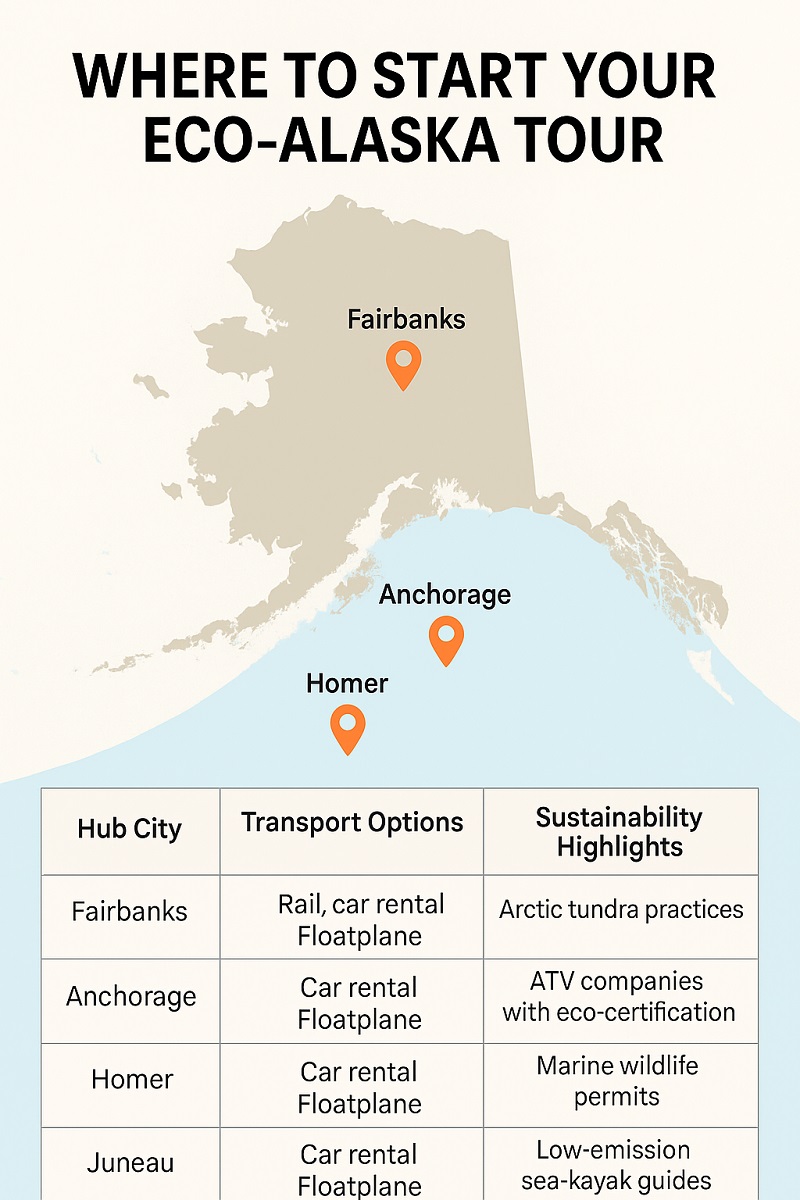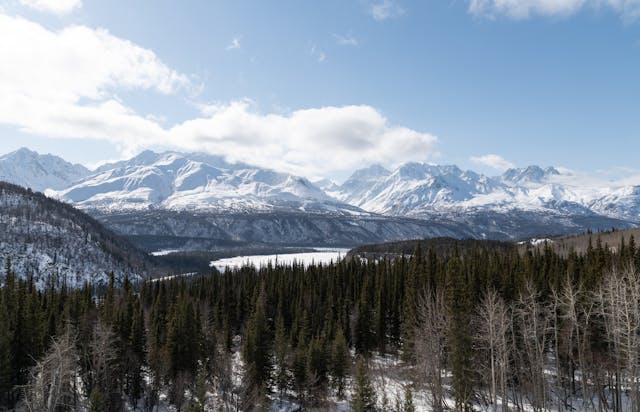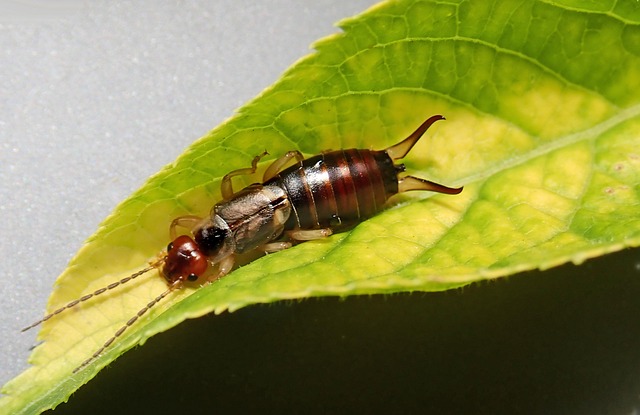Quick take: Alaska’s boom in land‑based adventure is rewriting the state’s tourism playbook. Electric ATVs, bear‑safe kayak camps, and Native‑led cultural hikes let visitors see the wild—without leaving scars on it.
The New Face of Alaska Travel
For decades, cruise ships defined the Alaska bucket‑list. But today, more travelers are choosing feet‑on‑the‑ground experiences that connect them to tundra, taiga, and tidewater glaciers. Visitor data from 2024 show land‑based arrivals jumped 29 % year‑on‑year, eclipsing pre‑pandemic records. What’s driving the shift? Climate‑conscious travelers want fewer smokestacks and more story‑rich encounters with local guides.
Why Eco‑Friendly Tours Matter in the Far North
Permafrost, slow‑growing alpine mosses, and salmon‑bearing rivers make Alaska’s ecosystems uniquely fragile. Heavy footprints—literal or carbon—can linger for centuries. Operators that follow Leave No Trace and invest in habitat restoration are setting a new standard: adventure with accountability.
Key principles you’ll see on responsible itineraries:
- Small groups (≤ 8 guests) to reduce noise and wildlife stress
- Low‑carbon transport—electric motors, rail transfers, or human‑powered vessels
- Guide accreditation in bear safety, wilderness first‑aid, and cultural interpretation
Mapping Alaska’s Low‑Impact Adventure Menu
| Type of Tour | Signature Experience | Eco Touchpoint |
| Glacier & Icefield Hikes | Crampon treks on Matanuska or Root Glacier | Scientific briefings on glacial melt rates |
| Sea‑Kayak Expeditions | Paddling with harbor seals in Prince William Sound | Leave No Trace beach camps, bear‑proof food barrels |
| Alaska ATV Tours | Riding single‑track in Hatcher Pass alpine valleys | Electric or hybrid ATVs, trail‑restoration fees included |
| Rail‑and‑Bike Combos | Anchorage‑to‑Denali with e‑bike legs | Rail offsets + e‑bike charging from solar hubs |
| Native‑Led Culture Walks | Ahtna storytelling along Copper River | Revenues shared with tribal councils |

Glacier & Icefield Hiking Tours
Glacier hikes offer a rare chance to experience the frozen heartbeat of Alaska up close. Operators on Matanuska and Root Glacier focus on education as much as exploration. Guides explain glacial flow dynamics, retreat patterns, and the signs of climate change visible in exposed ice layers.
Tours emphasize:
- Minimal waste—pack-in, pack-out only
- Use of natural features for rest stops (no permanent fixtures)
- Group safety protocols around crevasses and moulins
Some hikes partner with glaciologists to collect surface melt data, making the trip not just memorable but meaningful.
Sea‑Kayak Expeditions
In Prince William Sound and Kenai Fjords, sea‑kayak tours offer a peaceful, immersive way to explore Alaska’s marine ecosystems. Guests often encounter puffins, sea lions, and breaching humpbacks—all without disturbing their environment.
Eco best practices include:
- Camp setups using bear‑resistant canisters and biodegradable soaps
- Strict noise discipline to avoid spooking marine mammals
- Wildlife viewing codes of conduct (e.g., 100-yard seal haul-out buffer)
Operators are often members of the Sea Kayak Operators Association of Alaska, pledging to uphold marine conservation standards.
How Guided ATV Trips Are Re‑Opening the Backcountry—Safely
ATVs once had a reputation for scarring tundra. Modern tours flip that script by limiting trail width to 1.2 m, closing routes during thaw, and swapping gas engines for torque‑rich electric drivetrains. In Hatcher Pass, guides cap groups at five machines and channel 5 % of every booking into willow re‑vegetation projects that heal legacy ruts.
Trail Science in Brief:
- Soil compaction drops by 35 % when tire PSI is reduced below 5 psi on soft tundra soils.
- Erosion cuts shrink by half on routes with annual brush‑back and drainage dips.
- Wildlife flush distance averages < 60 m for e‑ATVs—one‑third that of snowmobiles.
These data points show that, with smart design, adventure and conservation can coexist.
Rail and Bike Hybrid Tours
The combination of scenic rail journeys and electric biking is gaining traction, particularly between Anchorage and Denali. Travelers enjoy majestic views from the train, then switch to e-bikes to explore valleys and ridgelines up close.
Sustainable features include:
- Onboard recycling programs and carbon-offset ticketing
- Solar-powered charging hubs for e-bikes
- Guided segments that highlight reforestation zones and migratory bird corridors
These hybrid tours offer a low-emission alternative that also supports remote communities along the route.
Native‑Led Culture Walks
Walking tours led by Ahtna, Dena’ina, or Tlingit guides connect visitors to the deep cultural heritage of the land. These experiences center on place-based storytelling, foraging ethics, and ancestral ecological practices.
Community benefits:
- Tour income supports language revitalization programs
- Guests can visit community centers, buy native crafts, and join educational discussions
- Many operators offer sliding-scale pricing for Alaskan youth and Indigenous families
Indigenous and Local Stewardship
From Chickaloon Dena’ina craft markets to Yup’ik summer fish‑camp visits, Native‑run add‑ons now anchor many tour circuits. Beyond cultural depth, these partnerships redirect tourism dollars—often 25–40 % of package revenue—into language preservation, youth internships, and salmon habitat monitoring.
Planning Your Responsible Alaska Tour
- Choose your season wisely – May/June for baby wildlife and wildflowers; August for berry‑rich bear watching.
- Vet the operator – Look for certifications like Adventure Green Alaska or membership in 1 % for the Planet.
- Pack light but smart – Reusable water bottle, layered synthetics, bear spray where legal, and a power bank rated for −10 °C.
- Offset your trip – Alaska Railroad, major airlines, and some tour companies offer carbon calculators with direct re‑investment in local reforestation.

Where to Start Your Eco‑Alaska Tour
Need help visualizing your route? Use the map below to pinpoint Alaska’s primary eco‑tour hubs and the easiest ways to reach them.
Map Key (interactive placeholder):
- Green pins = Cities with major airports and rail connections (Anchorage, Fairbanks).
- Blue pins = Coastal launch points for sea‑kayak expeditions (Homer, Seward, Valdez).
- Orange pins = Back‑country staging areas for Alaska ATV Tours and glacier hikes (Hatcher Pass, Matanuska, McCarthy/Kennecott).
- Gold stars = Regions with the highest concentration of Adventure Green Alaska‑certified operators.
Tip: Hover over any pin in the live version to see the nearest access point for rail, car rental, or floatplane service.
| Hub City / Region | Nearest Access Points | Best Transport Options | Sustainability Highlights |
| Anchorage | Ted Stevens Anchorage Intl. Airport, Alaska Railroad depot | Car rental, rail to Denali, shuttle to Whittier | 25+ eco‑certified operators, e‑ATV charging hubs |
| Fairbanks | Fairbanks Intl. Airport, Alaska Railroad northern terminus | Car rental, rail to Anchorage, floatplane charters | Aurora‑friendly winter eco‑lodges powered by solar |
| Homer | Homer Airport, Homer Spit harbor | Sea‑kayak outfitter shuttles, car rental | 12 marine wildlife tour companies with low‑impact badges |
| Seward | Seward Harbor, Alaska Railroad Coastal Classic terminus | Rail from Anchorage, car rental | Glacier tour boats using Tier 4 engines |
| Valdez | Valdez Airport, Prince William Sound ferry dock | Car rental, sea ferry, kayak outfitter vans | Highest percentage of Leave No Trace sea‑kayak guides |
| Hatcher Pass | Palmer municipal airport, Glenn Hwy pull‑outs | Shuttle vans, guided ATV transfers | 5 % tour revenue dedicated to trail restoration |
Future‑Proofing Adventure in a Warming North
Permafrost thaw could reroute historic trails by 2035, and glacier retreat is reshaping tidewater coastlines right now. Forward‑thinking operators are testing:
- Modular trail mats to bridge seasonal bogs without excavation
- Solar micro‑grids for remote e‑ATV charging
- AI‑driven wildlife alerts to shift tour times away from denning peaks
Their goal: keep Alaska wild—and accessible—long after the centennial of Denali National Park in 2038.
FAQ
Is every ATV tour eco‑certified?
No. Confirm credentials and ask about trail‑maintenance fees.
Are electric ATVs reliable in winter?
With heated battery enclosures, many perform down to −20 °C.
What wildlife encounters are common?
Moose, Dall sheep, and the occasional grizzly at a safe distance.
Can kids join multi‑day kayak trips?
Operators usually set a 12‑year age minimum and require swim tests.
Article prepared for TheEnvironmentalBlog.org to inspire low‑impact journeys across Alaska’s vast, vulnerable landscapes.




